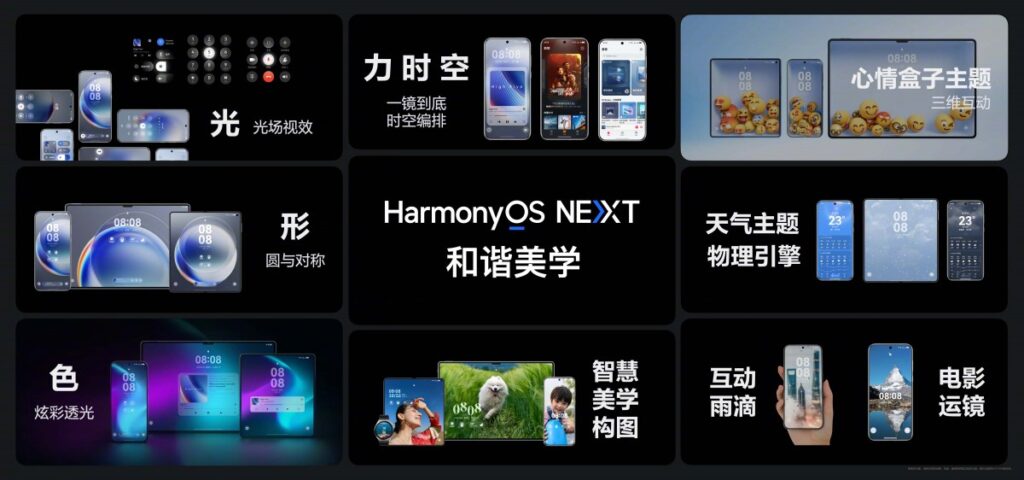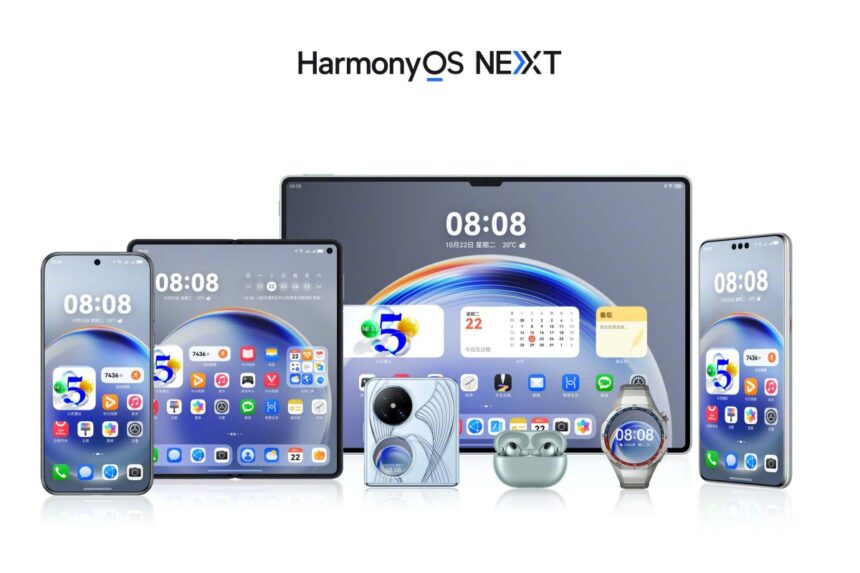Huawei just turned a new page in its history with the official launch of HarmonyOS Next. This release marks a significant milestone as it’s the company’s first operating system developed entirely independent of Android, paving the way for a complete transition to an in-house OS across its devices.
HarmonyOS Next is Here! (China Released)
HarmonyOS Next will power current and future Huawei devices in China, with plans for a global release confirmed. It will run on various devices, including smartphones, wearables, smart home gadgets, and car cockpits.

Built on a self-developed microkernel from OpenHarmony, HarmonyOS Next supports applications via the Huawei Ark compiler and Huawei Mobile Services (HMS). It ensures a seamless experience with a unified architecture that connects devices, the cloud, and various platforms for smooth interconnectivity.
Huawei Consumer Business Group Chairman Richard Yu announced that the HarmonyOS Next ecosystem now includes 15,000 apps and services, with more on the way. He also revealed that previous versions of HarmonyOS are currently powering over 1 billion devices worldwide. This figure includes a range of products, such as smartphones, tablets, smart wearables, and infotainment systems in cars and smart homes.

HarmonyOS Next features a refreshed visual identity with customizable lock and home screens, a redesigned control center, and faster animations. Additionally, it boasts advanced AI capabilities powered by the Pangu large language model, greatly enhancing the user experience.
Huawei has improved device fluency by 30% and reduced power consumption by 20% in software communication. With Huawei Share 2.0, you can transfer a 1.2GB file between two HarmonyOS Next devices in just 8 seconds!

For added security, HarmonyOS Next features a self-developed Star Shield architecture that provides robust system-level protection.
Huawei is rolling out a public beta version of HarmonyOS Next to users in China. The list of supported devices includes the Pura 70 series, Huawei Pocket 2, and MatePad Pro 11 (2024).









